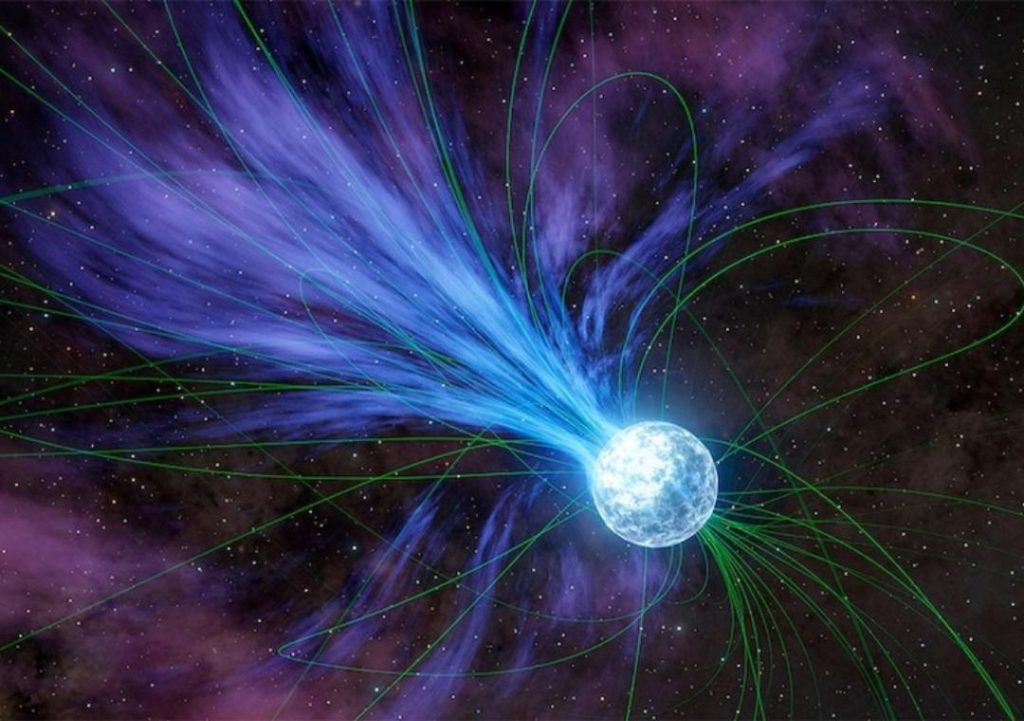
Gold & Platinum Created through Neutron Stars’ Explosions: Study
For centuries, humans have been fascinated by the origins of precious metals like gold and platinum. While many theories have been proposed, the exact mechanisms behind their creation have remained a mystery. Recently, a groundbreaking study led by Columbia University student Anirudh Patel has shed new light on the origins of these valuable elements. According to the study, magnetars or highly magnetized neutron stars played a crucial role in creating gold and platinum in a cosmic event over 20 years ago.
Magnetars are a type of neutron star that is characterized by its extremely strong magnetic field. These stars are born when a massive star undergoes a supernova explosion, leaving behind a dense remnant core. The intense magnetic field of a magnetar is thought to be responsible for its unique properties.
The study, which was published in The Astrophysical Journal, suggests that magnetars exploded and released flares that contained gold and platinum. These explosions are believed to occur approximately once every decade in the Milky Way galaxy and annually across the observable universe.
So, how did magnetars manage to create these precious metals? The process begins with the intense magnetic field of the magnetar, which causes the star’s atmosphere to heat up and ionize. This creates a plasma of charged particles, including electrons and protons, which are accelerated by the strong magnetic field.
As the plasma collides with other particles, such as electrons and positrons, it creates a high-energy environment that is conducive to the formation of heavy elements like gold and platinum. These elements are forged through a process known as rapid neutron capture, or r-process nucleosynthesis, which occurs when heavy elements are created through the rapid capture of neutrons by atomic nuclei.
The study suggests that the magnetar’s explosion released a massive amount of energy, which allowed for the creation of these heavy elements. The resulting flare-up of particles and radiation was so powerful that it was detectable from Earth, providing scientists with a unique opportunity to study the event.
The discovery of magnetars as the source of gold and platinum has significant implications for our understanding of the origins of these precious metals. For centuries, humans have believed that gold and platinum were created through natural geological processes, such as the interaction of tectonic plates and the Earth’s mantle. However, this new study suggests that these elements may have a more exotic origin, one that involves the explosive power of magnetars.
The study’s findings also have implications for the search for extraterrestrial life. If magnetars are capable of creating heavy elements like gold and platinum, it raises the possibility that other forms of life may be able to create similar elements through similar processes. This could potentially provide a new avenue for the search for extraterrestrial life, as scientists may be able to look for signs of heavy element creation in the atmospheres of distant stars.
In conclusion, the study led by Anirudh Patel has provided a groundbreaking new insight into the origins of gold and platinum. The discovery of magnetars as the source of these precious metals has significant implications for our understanding of the universe and the search for extraterrestrial life. As scientists continue to study the mysteries of the cosmos, it is likely that we will uncover even more surprising and fascinating secrets about the origins of the elements that make up our universe.






